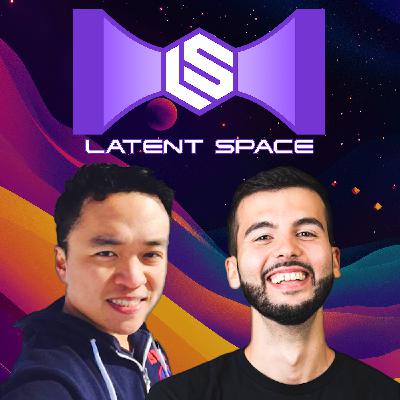From applied cryptography and offensive security in France’s defense industry to optimizing nuclear submarine workflows, then selling his e-signature startup to Docusign (https://www.docusign.com/company/news-center/opentrust-joins-docusign-global-trust-network and now running AI as CTO of Superhuman Mail (Superhuman, recently acquired by Grammarly https://techcrunch.com/2025/07/01/grammarly-acquires-ai-email-client-superhuman/), Loïc Houssier has lived the full arc from deep infra and compliance hell to obsessing over 100ms product experiences and AI-native email. We sat down with Loïc to dig into how you actually put AI into an inbox without adding latency, why Superhuman leans so hard into agentic search and “Ask AI” over your entire email history, how they design tools vs. agents and fight agent laziness, what box-priced inference and local-first caching mean for cost and reliability, and his bet that your inbox will power your future AI EA while AI massively widens the gap between engineers with real fundamentals and those faking it.
We discuss:
Loïc’s path from applied cryptography and offensive security in France’s defense industry to submarines, e-signatures, Docusign, and now Superhuman Mail
What 3,000+ engineers actually do at a “simple” product like Docusign: regional compliance, on-prem appliances, and why global scale explodes complexity
How Superhuman thinks about AI in email: auto-labels, smart summaries, follow-up nudges, “Ask AI” search, and the rule that AI must never add latency or friction
Superhuman’s agentic framework: tools vs. agents, fighting “agent laziness,” deep semantic search over huge inboxes, and pagination strategies to find the real needle in the haystack
How they evaluate OpenAI, Anthropic, Gemini, and open models: canonical queries, end-to-end evals, date reasoning, and Rahul’s infamous “what wood was my table?” test
Infra and cost philosophy: local-first caching, vector search backends, Baseten “box” pricing vs. per-token pricing, and thinking in price-per-trillion-tokens instead of price-per-million
The vision of Superhuman as your AI EA: auto-drafting replies in your voice, scheduling on your behalf, and using your inbox as the ultimate private data source
How the Grammarly + Coda + Superhuman stack could power truly context-aware assistance across email, docs, calendars, contracts, and more
Inside Superhuman’s AI-dev culture: free-for-all tool adoption, tracking AI usage on PRs, and going from ~4 to ~6 PRs per engineer per week
Why Loïc believes everyone should still learn to code, and how AI will amplify great engineers with strong fundamentals while exposing shallow ones even faster
—
Loïc Houssier
LinkedIn: https://www.linkedin.com/in/houssier/
Where to find Latent Space
X: https://x.com/latentspacepod
Substack: https://www.latent.space/
Chapters
00:00:00 Introduction and Loïc's Journey from Nuclear Submarines to Superhuman
00:06:40 Docusign Acquisition and the Enterprise Email Stack
00:10:26 Superhuman's AI Vision: Your Inbox as the Real AI Agent
00:13:20 Ask AI: Agentic Search and the Quality Problem
00:18:20 Infrastructure Choices: Model Selection, Base10, and Cost Management
00:27:30 Local-First Architecture and the Database Stack
00:30:50 Evals, Quality, and the Rahul Wood Table Test
00:42:30 The Future EA: Auto-Drafting and Proactive Assistance
00:46:40 Grammarly Acquisition and the Contextual Advantage
00:38:40 Voice, Video, and the End of Writing
00:51:40 Knowledge Graphs: The Hard Problem Nobody Has Solved
00:56:40 Competing with OpenAI and the Browser Question
01:02:30 AI Coding Tools: From 4 to 6 PRs Per Week
01:08:00 Engineering Culture, Hiring, and the Future of Software Development







Using AI powered tools for continuous support and lead capture has truly revolutionized the way we interact with our customers. The seamless integration of AI technology has made the process incredibly efficient and effective, allowing us to provide round-the-clock assistance and capture leads effortlessly, check for more on https://lite.evernote.com/note/e95fdd4e-b8ef-6a70-7714-913082fbddf3 . The intuitive nature of these tools has made our job easier and more streamlined, resulting in a more personalized and engaging experience for our clients. Overall, I am extremely impressed with the impact that AI powered tools have had on our business and I highly recommend incorporating them into your strategy for unparalleled success.